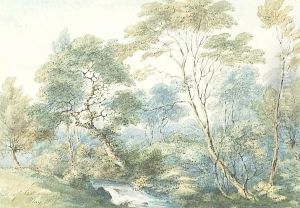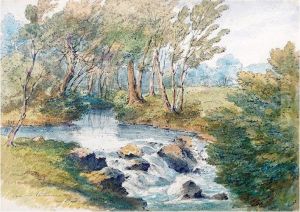James Gibbs Paintings
James Gibbs was a prominent Scottish architect who played a significant role in the spread of the Palladian style in Britain. Born in Aberdeen, Scotland, on December 23, 1682, he was educated at Aberdeen Grammar School and Marischal College, now part of the University of Aberdeen. Gibbs was sent to Rome by the Catholic earl of Mar, where he studied at the Collegio Romano from 1700 to 1703 and then at the Accademia di San Luca. His Catholicism, at a time when the religion was marginalized in Britain, influenced his career and connections within the Roman Catholic community.
Gibbs is best known for his work in London, where he moved in 1708 after spending time in Holland upon leaving Italy. His architectural style was deeply influenced by the Baroque architecture he observed in Rome, but he adapted these influences to the British taste, creating a more restrained version of the style. One of his most notable works is the Church of St Martin-in-the-Fields, located in Trafalgar Square, London, completed in 1726. This church had a profound impact on church architecture in the British colonies of North America and set the tone for Anglican church design for many years.
Among his other significant works are the Radcliffe Camera at Oxford University, completed in 1749, which is considered one of the most iconic buildings in Oxford, and the Senate House at the University of Cambridge. Gibbs also published a book titled 'A Book of Architecture', containing designs of buildings and ornaments in 1728, which had a considerable influence on Georgian architecture. His work contributed to the transition from the English Baroque of Sir Christopher Wren to the neoclassical style that gained prominence in the latter half of the 18th century.
James Gibbs never married and lived with his two sisters in London. His contributions to architecture were recognized by his election as a fellow of the Royal Society in 1723. He died on August 5, 1754, and was buried in the church of St Marylebone. Gibbs's architectural legacy continued to be celebrated and studied, and his style helped define the architectural character of many buildings from the Georgian period in Britain.

